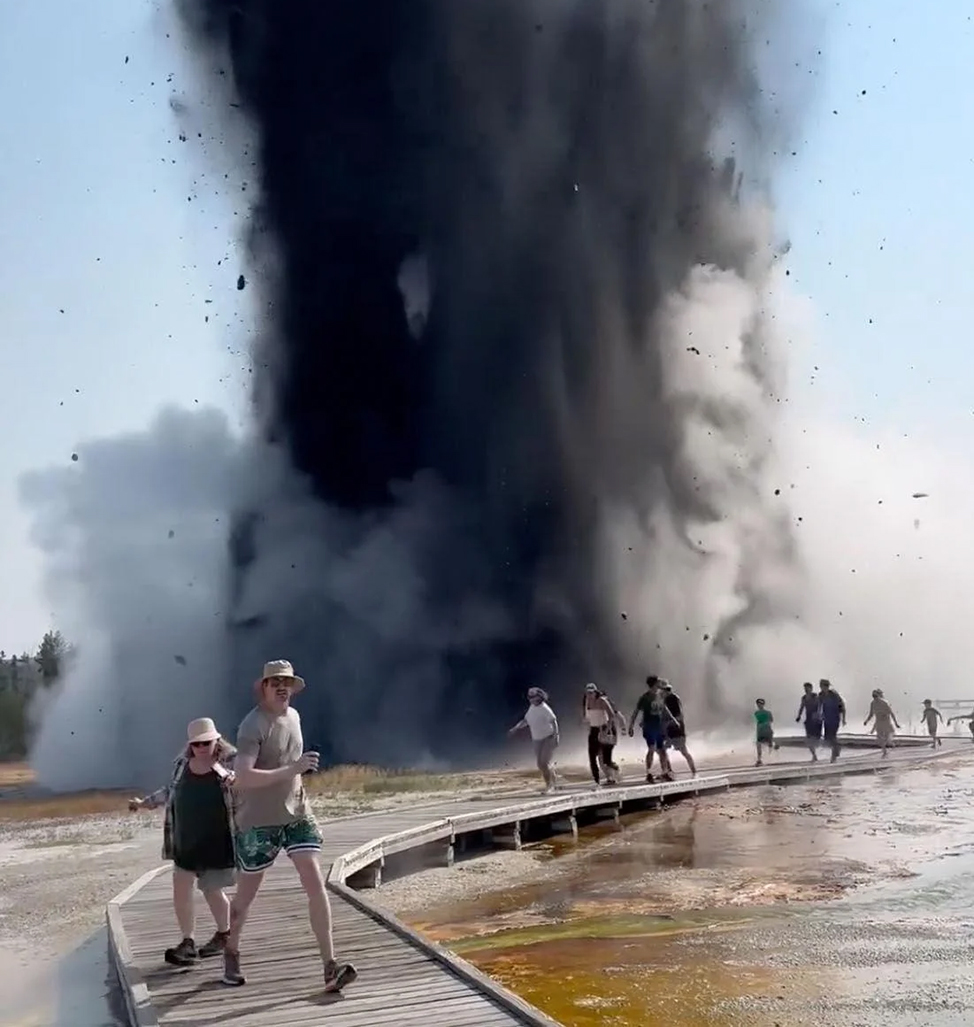Large Steam Explosion Rocks Biscuit Basin at Yellowstone (but Don’t Panic!)
Posted on Categories Discover Magazine

A large hydrothermal (steam) explosion rocked the Biscuit Basin Geyser near Black Diamond Pool on July 23 during the peak of tourist season. The blast does not appear to have injured anyone, but people on the boardwalk got quite a shock when the explosion occurred. Video of the blast show how violent it was, throwing a dark cloud of debris into the sky near onlookers.
The video (posted on Facebook) is quite astonishing, showing what starts out as a potentially normal geyser eruption but quickly escalates to something more violent. Although the scale is not entirely clear, there appear to be book or larger sized blocks that were thrown out of the geyser as well as copious finer debris. The boardwalk was damaged by the falling debris.
Steam is No Stranger to Yellowstone
The USGS notice after the blast says that this was the first larger steam explosion at the Biscuit Basin geyser, a few miles north of Old Faithful, since May 2009. However, other explosions have occurred in the Norris Geyser Basin in 1989 and 2024. Even geysers can throw more material out every once in a while like Steamboat Geyser did a few days ago.
Steam explosions are likely the biggest volcanic hazard at Yellowstone Caldera today. That comes as a surprise to most people who think Yellowstone is all about massive eruptions that would blanket a large swath of North America with volcanic ash. However, the vast hydrothermal system, where water percolates into the ground and gets heated by the hot rocks under the surface, is very active and prone to steam explosions.
Most people know that water expands when it turns to steam. If you’ve ever watched a kettle on the stove, the whistle is caused by steam being forced out of the kettle as the water boils. If water trapped underground turns to steam rapidly, it can cause that change in volume to blast material out. Geysers are an example of where this happens periodically, but a steam explosion might occur where water trapped in the subsurface gets converted to steam rapidly — “flashes” to steam — prompting an explosion.
Nothing Bigger in the Works
Before people start jumping to panicky conclusions, an explosion like this at the Biscuit Basin geyser is not a sign of something bigger to come. The USGS Yellowstone Volcano Observatory has the current volcanic alert status at Yellowstone Caldera at green (normal). Without additional signs like a sharp increase in earthquakes, changes in the types of earthquakes that might signify magma moving, or rising ground surface, the most likely explanation of the explosion is changes in the hydrothermal system, possibly due to seasonal changes in the water table.
However, it is a reminder that visiting volcanoes — especially potentially active ones — is dangerous. They might seem like just another park, but dozens of people have died on volcanoes when these mostly unpredictable steam explosions (also called phreatic explosions) occur. One should always use caution when visiting volcanoes and remember that “stuff happens” … and sometimes that stuff can be more tragic than this dramatic explosion at Yellowstone.